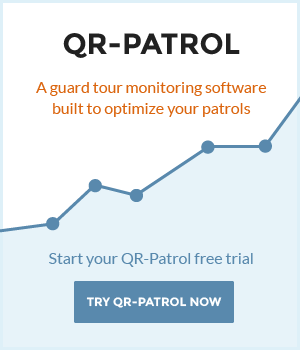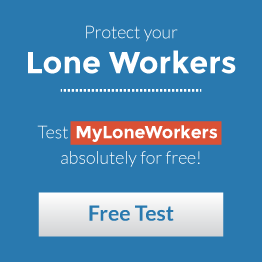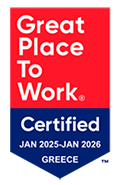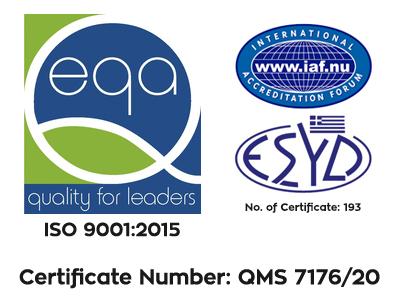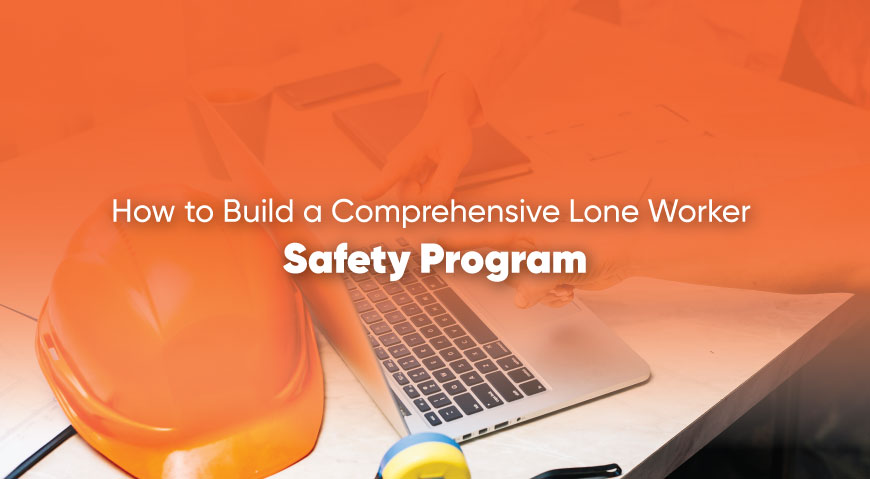
Ensuring lone worker safety is a critical responsibility for organizations with employees who work alone in potentially hazardous environments. A comprehensive lone worker safety program mitigates risks, enhances employee well-being, and ensures compliance with workplace safety regulations. This step-by-step guide will help you create a robust lone worker safety program tailored to your organization's specific needs, incorporating advanced tools like lone worker apps and lone worker devices such as MyLoneWorkers.
Step 1: Conduct a Lone Working Risk Assessment
A thorough lone working risk assessment is the foundation of any effective lone worker safety program. This step involves identifying potential hazards that lone workers may face, such as physical dangers, environmental risks, or lack of immediate assistance.
- Evaluate Work Environments: Assess the locations where lone workers operate, such as remote sites, construction zones, or client premises. Consider risks like slips, falls, or exposure to hazardous materials.
- Identify Task-Specific Risks: Examine the tasks lone workers perform. For example, handling heavy machinery or working at heights increases risk.
- Involve Employees: Gather input from lone workers to understand their challenges and concerns.
- Leverage Technology: Use tools like MyLoneWorkers’ lone worker application to automate risk assessments. Its Mobile Forms feature allows workers to report hazards in real time, replacing cumbersome paper-based processes.
By conducting a detailed lone working risk assessment, you can prioritize safety measures and allocate resources effectively.
Step 2: Develop Clear Lone Worker Safety Policies
Once risks are identified, establish clear policies to address them. These policies should outline safety protocols, emergency procedures, and the use of lone worker devices and lone worker phone apps.
- Define Responsibilities: Specify the roles of lone workers, managers, and monitoring centers in maintaining safety.
- Set Communication Protocols: Ensure lone workers can communicate with a monitoring center or supervisor at all times. MyLoneWorkers’ Real-Time Position Monitoring uses GPS, Wi-Fi, and GSM networks to track workers’ locations accurately.
- Incorporate Emergency Procedures: Include steps for handling emergencies, such as activating a Panic Button or Man Down Alert through a lone worker app.
- Document Policies: Create a written safety manual accessible to all employees.
Clear policies provide a framework for consistent lone worker safety practices across your organization.
Step 3: Implement Lone Worker Devices and Apps
Technology plays a pivotal role in modern lone worker safety programs. Equip your lone workers with lone worker devices and a lone worker phone app like MyLoneWorkers to enhance their protection.
- Panic Button: Enhance your lone worker safety with MyLoneWorkers’ external BLE SOS Panic Button. In situations where workers cannot use their smartphones (e.g., during physical attacks), they can press the Panic Button to send a real-time SOS alert to the monitoring center. Versatile and adaptable, these buttons can be integrated into mobile devices, wearable tech, or fixed locations, ensuring immediate access to help. The system tracks the distress signal’s origin, enabling responders to locate and assist the worker swiftly. This feature not only reacts to emergencies but also proactively mitigates risks, reducing the impact of adverse situations.
- Safepass: The Safepass feature empowers companies to safeguard VIPs and individuals through a user-friendly lone worker phone app. Workers can request enhanced security for specific time periods via an intuitive interface. Safepass includes an SOS button that triggers a distress signal in emergencies, notifying designated contacts or emergency services for rapid response. This additional layer of protection ensures workers have support when they need it most, making it ideal for high-risk environments.
- Welfare Check: MyLoneWorkers’ Welfare Check feature prioritizes lone worker safety through systematic safety protocols. Managers can schedule safety checks at specific intervals and monitor worker status via real-time alerts. If a check-in is missed, the system instantly notifies managers through the web app and email, enabling immediate action. This proactive tool ensures timely interventions and enhances worker well-being.
- Man Down Alert: The Man Down Alert protects lone workers from risks like falls, slips, or sudden health issues. Using a sensor clip on the worker’s uniform, this feature detects incidents and automatically sends a notification to the monitoring center. Even if a worker cannot manually send an alert, the Man Down Alert ensures immediate action, providing maximum protection in urgent situations.
- Geofence Alert: MyLoneWorkers’ Geofence Alert enhances accountability by ensuring workers scan checkpoints within predefined areas. If a worker fails to do so, the monitoring center is instantly informed, allowing managers to address potential safety or compliance issues promptly. This feature strengthens oversight and supports lone worker safety.
By integrating these features, MyLoneWorkers provides a comprehensive lone worker application that addresses diverse safety needs.
Step 4: Train Employees on Lone Worker Safety Protocols
Training is essential to ensure lone workers understand how to use lone worker apps and follow safety protocols. A well-trained workforce is better equipped to handle risks and emergencies.
- Tool Familiarization: Train workers on using MyLoneWorkers’ features, such as the Panic Button, Safepass, and Mobile Forms. Demonstrate how to activate alerts and report incidents.
- Emergency Response Drills: Conduct regular drills to practice responses to scenarios like falls or physical attacks. Simulate using the Man Down Alert or Geofence Alert to reinforce proper usage.
- Risk Awareness: Educate workers on recognizing and mitigating risks identified in the lone working risk assessment.
- Ongoing Training: Provide refresher courses to keep skills sharp and introduce updates to the lone worker application.
Effective training empowers lone workers to take charge of their safety and maximizes the benefits of lone worker devices.
Step 5: Monitor and Manage Lone Worker Activities
Continuous monitoring is critical to ensuring lone worker safety. Use MyLoneWorkers’ advanced features to track workers’ activities and respond to incidents in real time.
- Timekeeping: MyLoneWorkers automatically records check-in and check-out times when workers arrive at or leave remote sites. This data helps verify compliance with schedules and ensures accountability.
- Real-Time Position Monitoring: The lone worker phone app tracks workers’ locations via GPS, Wi-Fi, and GSM networks, providing accurate, real-time updates to the monitoring center.
- Welfare Checks: Schedule regular safety checks to confirm workers’ well-being. Missed check-ins trigger immediate alerts, allowing managers to take prompt action.
- Incident Reporting: Use Mobile Forms to streamline incident reporting. Workers can submit comments, answer questions, or receive instructions, reducing paperwork and improving communication.
By leveraging MyLoneWorkers’ monitoring capabilities, you can maintain oversight of lone workers and respond swiftly to potential issues.
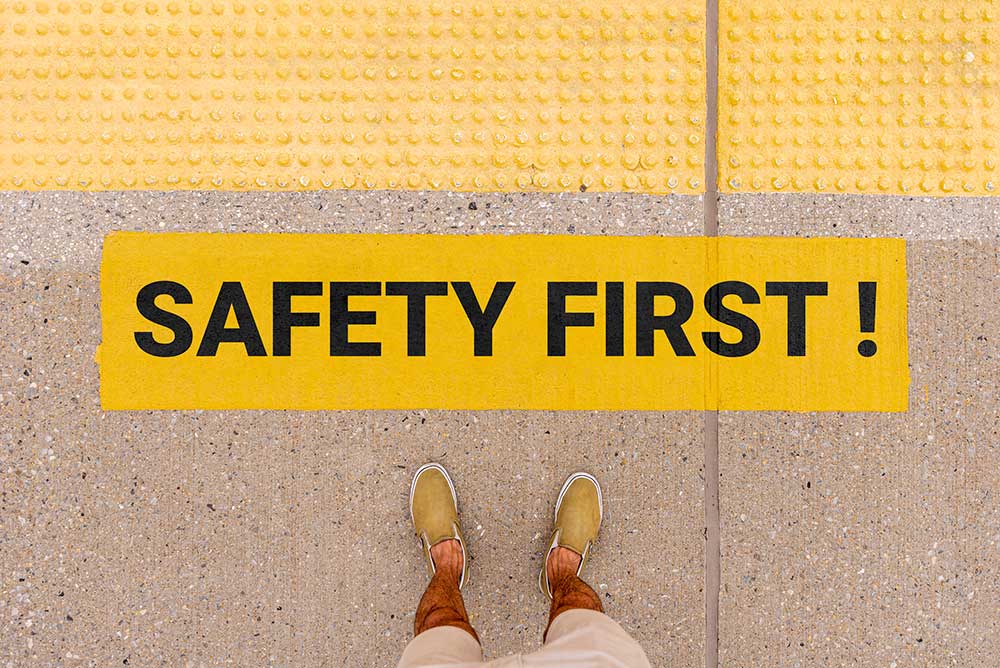
Step 6: Evaluate and Improve Your Lone Worker Safety Program
A lone worker safety program is not static; it requires regular evaluation to remain effective. Continuously assess and refine your program to address new risks and incorporate technological advancements.
- Collect Feedback: Gather input from lone workers and managers on the usability of lone worker apps and lone worker devices. Identify areas for improvement, such as additional training or feature enhancements.
- Analyze Incident Data: Review data from Man Down Alerts, Panic Button activations, and Geofence Alerts to identify patterns or recurring risks.
- Update Risk Assessments: Revisit your lone working risk assessment periodically to account for changes in work environments or tasks.
- Adopt New Technologies: Stay informed about advancements in lone worker applications. MyLoneWorkers’ cloud-based platform ensures seamless updates and integration of new features.
Regular evaluation keeps your lone worker safety program aligned with your organization’s evolving needs.
Step 7: Communicate with Stakeholders
Transparency is key to maintaining trust and accountability in your lone worker safety program. Keep stakeholders, including clients and employees, informed about your safety efforts.
- Client Reports: Use MyLoneWorkers’ Scheduled Email Client Reports to provide clients with detailed insights into your safety measures and worker activities. This transparency enhances client satisfaction and trust.
- Employee Updates: Regularly communicate safety policy updates and training schedules to lone workers.
- Monitoring Center Coordination: Ensure the monitoring center is equipped to handle alerts from Panic Buttons, Safepass, and Man Down Alerts efficiently.
Effective communication reinforces the value of your lone worker safety program and fosters a culture of safety.
Why Choose MyLoneWorkers for Lone Worker Safety?
MyLoneWorkers is a leading lone worker application designed to streamline safety management and protect lone workers in high-risk environments. Its key features include:
- Efficient Scheduling: Create and manage lone workers’ schedules with customizable templates, ensuring tasks are completed efficiently.
- Real-Time Monitoring: Track workers’ locations and activities using GPS, Wi-Fi, and GSM networks.
- Automated Alerts: Receive instant notifications for missed welfare checks, Man Down Alerts, or Panic Button activations.
- Seamless Communication: Use Mobile Forms and Scheduled Email Client Reports to maintain clear communication with workers and clients.
- Comprehensive Safety Features: Integrate Panic Buttons, Safepass, Welfare Checks, Man Down Alerts, and Geofence Alerts for robust protection.
By incorporating MyLoneWorkers into your lone worker safety program, you can automate processes, reduce risks, and ensure compliance with safety standards.
Conclusion
Building a comprehensive lone worker safety program requires careful planning, advanced technology, and ongoing evaluation. By following these seven steps—conducting a lone working risk assessment, developing policies, implementing lone worker devices and lone worker apps, training employees, monitoring activities, evaluating the program, and communicating with stakeholders—you can create a tailored safety solution that protects your lone workers and meets your organization’s unique needs.
MyLoneWorkers offers a powerful lone worker application with features like Panic Buttons, Safepass, and Man Down Alerts, making it an ideal partner for enhancing lone worker safety. Start building your safety program today and ensure your lone workers are protected in any environment.
Contact us today to learn more about MyLoneWorkers or request a demo to see how MyLoneWorkers can benefit your organization.


